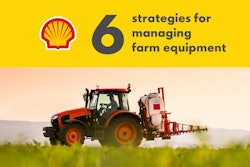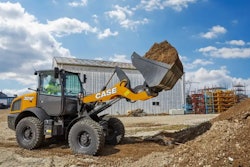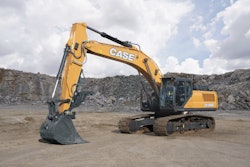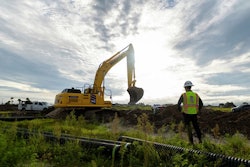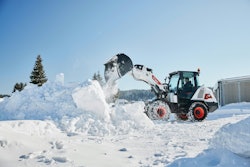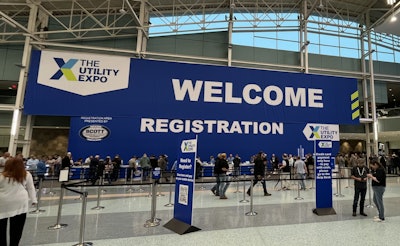
It’s no secret 2025 has brought some unique challenges for construction equipment manufacturers. Stubborn interest rates, tariffs and political uncertainty are just a few of the hurdles OEMs have had to jump this year.
As manufacturers get set to start 2026, Equipment World editors were on the ground at Utility Expo 2025 to ask OEMs how their year went and what they’re planning for the coming year.
Diamond Mowers
Recent relief on interest rates from the Federal Reserve should give business a boost, says Matt Nelson, director of municipal business at attachments manufacturer Diamond Mowers. High interest rates have been hurting end users, which then hurts dealers’ ability to carry inventory and do business, he says.
Diamond Mowers has felt the impact of tariffs, but having U.S.-based manufacturing gives it some relief.
“We are manufactured in Sioux Falls, South Dakota, as American made as American made can get,” he says. “We're certainly buying components from overseas, and so tariffs have certainly caused those to go up, which negatively impacts pricing."
While Diamond Mowers hasn’t yet passed any of those costs on to customers, Nelson says that, like most businesses, those added costs will eventually land on the final sticker price.
“Diamond Mowers is no different than any other business in that we built our business around a certain profit margin,” says Nelson. “Profit is not a dirty word. That pays for engineering, and it pays for new tooling.”
Looking ahead, Nelson expects municipal sales of roadside mowing equipment to remain solid in 2026. And while attachment sales have been tougher in 2025, Nelson expects to see those sales improve next year.
Movex Innovation
Canadian manufacturer Movex Innovation – known in the construction world for mini remote-control crawlers – spent 2025 expanding its international dealer network, says William Nicholls, marketing strategist. U.S. tariffs drove a need to expand into new regions.
The company has also been focusing on R&D to adapt its machines for new markets, including the mining industry.
For next year, Nicholls says the company will continue to drive engineering improvements to its lineup and research developing autonomous equipment.
“One of the things we are working on, like everybody, is autonomous vehicles,” he says. “This is something that will come very soon in the industry, so we want to stay ahead of the curve.”
Takeuchi
Even though this year brought many changes to the political and economic climate, Takeuchi U.S. President Jeff Stewart says both customers and dealers remained positive throughout 2025.
Customers gathered in two camps when it came to purchasing in 2025, he says. One group bought machines in hopes of avoiding higher prices before the tariffs hit. The other group will wait until the end of 2025, hoping for lower interest rates.
“There are so many split camps right now that it's not one wave [of purchases] like it used to be in the old days,” he says. “Now you've got different people with different thought processes. We're just trying to make sure that we're able to address each one of those as they come up.”
Stewart remains positive about 2026, though gauging the political climate and adapting to it will remain a constant task.
“For us, it's monitoring what's going on every day and just staying true to what we normally do,” Stewart says. “We're still doing product development. We're bringing new things to the marketplace.”
He adds that a volatile political climate is part of the business cycle, saying, “It can’t always be up.”
Thunder Creek
Larry Lea, vice president of sales for trailer manufacturer Thunder Creek, says 2025 has been a good year for industrial sales, but the second half of the year hasn’t developed as positively as the company had expected.
“While it's challenging, we're still seeing some wins,” Lea says. “But there are some pressures in the market right now that we're feeling, especially selling through a dealer channel, where they've got issues with inventory of all kinds, which puts pressures on a manufacturer like us to get more product on the ground.”
Tariffs haven’t been a major problem for Thunder Creek, he says, since the company sources most materials and components in the U.S. It has enacted only a minor price increase due to tariffs.
For 2026, Lea says, there will be a big emphasis on expanding the distribution network to fill some holes in its dealer network.
“Next year for us is going to be another push for increased distribution, for finding the right dealer partners,” he says. “We feel like next year we'll be able to get off to a good start with some of our newer products. … When you look at all the different categories that we play in, there's still a ton of opportunity. And we're definitely optimistic.”
Trimble
It was a good year at Trimble, says Jonathan White, civil specialty construction product manager. He reports no lag in construction customers’ spending, and customers have been especially interested in machine connectivity. Tariffs haven’t been a major negative factor yet, though he admits that could change next year.
“I don't think we fully felt the extent of what the tariffs are going to ultimately mean for the industry,” White says. “Manufacturing, steel, things like that are going to eventually play a role.”
Thriving in 2026 will be about flexibility, he says, as the challenges can change in different regions.
“You can't put the blinders on, you have to remain open,” says White. “It is a fluid environment across the globe economically, so having the ability to pivot when you need to and change the strategy in a particular region, a micro region, [is important].”

